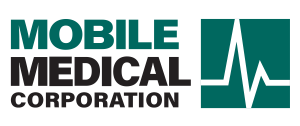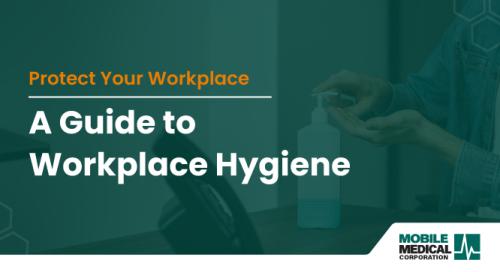As cold and flu season approaches, employers must prioritize the health and well-being of their employees. Maintaining good workplace hygiene not only reduces the spread of illnesses but also fosters a healthier, more productive work environment. In this blog, we'll delve into the significance of maintaining hygiene in the workplace and offer valuable advice on creating effective policies.
Why Workplace Hygiene Matters
Maintaining a high standard of personal hygiene in the workplace is crucial for reasons that extend beyond just cleanliness. Besides contributing to a healthier workforce, you will also positively impact your company's reputation.
Reduced Spread of Illnesses
One of the primary reasons why hygiene matters is its direct impact on reducing the spread of illnesses. Employees come into close contact with each other in a shared space daily. Proper hygiene practices significantly decrease the transmission of colds, flu, and other contagious diseases.
Promote regular handwashing, sanitization of common areas, and the use of tissues or elbow coverings during coughs. By minimizing the risk of illness, businesses can maintain a more consistent and productive workforce.
Improved Employee Well-being
A clean environment goes hand-in-hand with employee hygiene. When individuals work in surroundings that prioritize cleanliness, they are less likely to fall ill. Fewer sick days mean increased productivity and efficiency, benefiting both employees and the organization. Investing in these hygiene practices supports the physical health of the workforce, all while contributing to their overall job satisfaction and morale.
Enhanced Company Reputation
Beyond internal benefits, workplace hygiene plays a crucial role in shaping the external perception of a company. A workplace that is known for its commitment to hygiene and employee well-being fosters a positive reputation.
Clients appreciate dealing with businesses that prioritize cleanliness, seeing it as a reflection of professionalism and attention to detail. Moreover, potential hires are likely to be attracted to companies that prioritize the health of their employees. This will contribute to a positive brand image.
Guidelines for Establishing a Workplace Hygiene Policy
Now that we've established the link between employee well-being and success, our next step is to create a comprehensive workplace hygiene policy. This will become a proactive framework to mitigate health risks in addition to enhancing cleanliness.
Hand Hygiene
One of the most effective ways to prevent the spread of germs and illnesses in the workplace is by encouraging frequent handwashing. Employees should be reminded to wash their hands with soap and water for at least 20 seconds, following recommended guidelines from health authorities. Proper handwashing removes visible dirt and eliminates harmful bacteria and viruses, reducing the risk of infections.
In addition to promoting handwashing, providing hand sanitizers in common areas is a practical and convenient way to enhance hand hygiene practices. Common touchpoints such as entrances, break rooms, or meeting areas can benefit from strategically placed hand sanitizer stations. This encourages employees to sanitize their hands, especially after touching shared surfaces like doorknobs, elevator buttons, and communal equipment.
Respiratory Hygiene
Often underestimated, respiratory hygiene plays a pivotal role in maintaining a healthy workplace environment. An essential aspect of workplace hygiene is encouraging employees to adopt proper coughing and sneezing etiquette. Rather than resorting to the age-old habit of using one's hands, employees should be educated on the importance of covering their mouth and nose with a tissue or, if unavailable, using their elbow. This simple yet effective practice prevents respiratory droplets from dispersing into the air and onto surfaces, reducing the risk of spreading illnesses.
Consider incorporating informative posters or digital displays in prominent areas (such as break rooms and common spaces) to visually reinforce the message. You'll also want to ensure that tissues are readily available throughout the workplace. Strategically place tissue dispensers in high-traffic areas, meeting rooms, and individual workstations.
Equally important is the provision of no-touch disposal containers. These containers offer a hygienic and convenient means for employees to discard used tissues without coming into contact with potentially contaminated surfaces. Regularly empty and sanitize these containers to maintain a safe environment for all employees.
Cleaning and Disinfection
High-touch surfaces serve as potential breeding grounds for germs and viruses, necessitating a targeted approach to cleaning. The establishment of regular cleaning schedules is paramount to mitigating health risks associated with shared spaces. Door knobs, keyboards, phones, and shared equipment are focal points that demand consistent attention. Implementing a routine cleaning regimen for these surfaces not only reduces the risk of surface transmission but also instills confidence among employees that their workspace is diligently maintained.
Moreover, opting for EPA-approved disinfectants is a strategic decision that ensures the targeted elimination of germs and viruses. These approved disinfectants have undergone rigorous testing to verify their effectiveness against a spectrum of pathogens, providing a reliable line of defense against infectious agents.
Sick Leave Policy
It is imperative to communicate to employees that staying home when feeling unwell is a collective commitment to preventing the spread of illnesses. Clear communication regarding the importance of taking sick leave when needed helps dismantle the lingering stigma associated with absenteeism due to illness.
Recognizing the diverse needs of employees, the implementation of flexible sick leave policies is an essential step towards accommodating the varying challenges individuals may face. Consider adopting policies that allow for a reasonable number of paid sick days per year, providing a safety net for employees dealing with short-term illnesses.
Education and Communication
Conduct regular training sessions to ensure that everyone is well-informed about the importance of workplace hygiene and the specific measures in place within the organization. Cover topics such as hand hygiene, respiratory etiquette, and the proper use of cleaning or disinfection materials.
Engage employees through interactive sessions, workshops, and online modules that allow for active participation. Ensure that the training content is accessible to a diverse workforce, taking varying backgrounds into account. By instilling a strong understanding of the rationale behind hygiene practices, employees are more likely to embrace these behaviors as integral components of their daily routines.
Try utilizing a variety of communication channels to reach employees at different touchpoints, as well. Newsletters offer a platform for in-depth articles, success stories, and tips on maintaining a hygienic workplace. You may also send periodic emails that not only remind employees of the importance of workplace hygiene but also provide updates on any changes in protocols or new initiatives.
Lead by Example
Management sets the standard by embodying the hygiene practices they wish to instill throughout the workforce. From the executives to frontline supervisors, leaders should consistently model proper behaviors, becoming living examples of the hygiene standards they expect from their teams.
Leaders can send a powerful message — that these behaviors are not just encouraged but essential. This demonstration of commitment fosters a culture where employees understand that hygiene is a shared responsibility at all company levels.
Safeguard Your Employees with MobMed!
Even small changes can make a big difference in the wellness of your workplace. For personalized guidance on improving workplace wellness please contact one of our representatives to get started!



